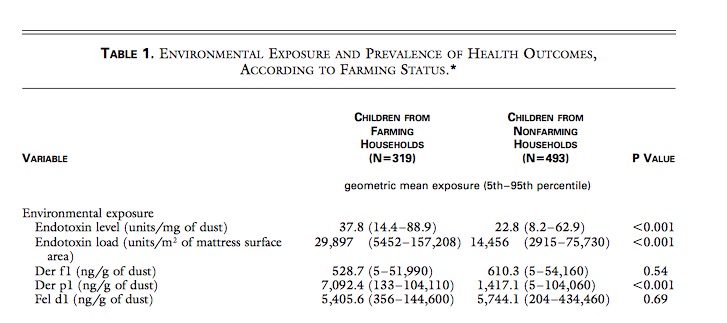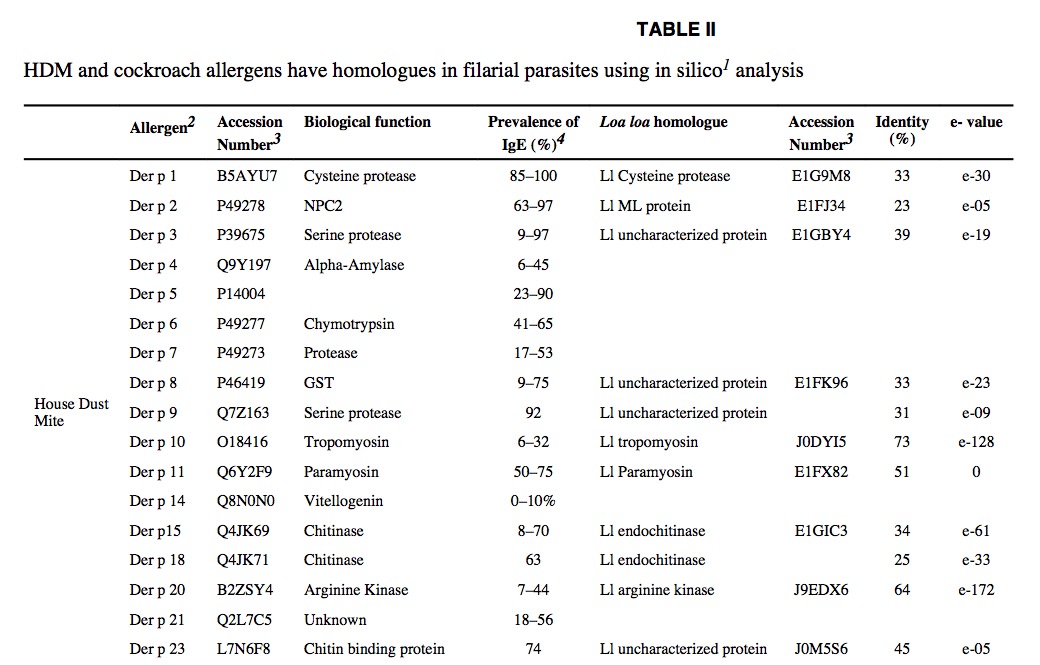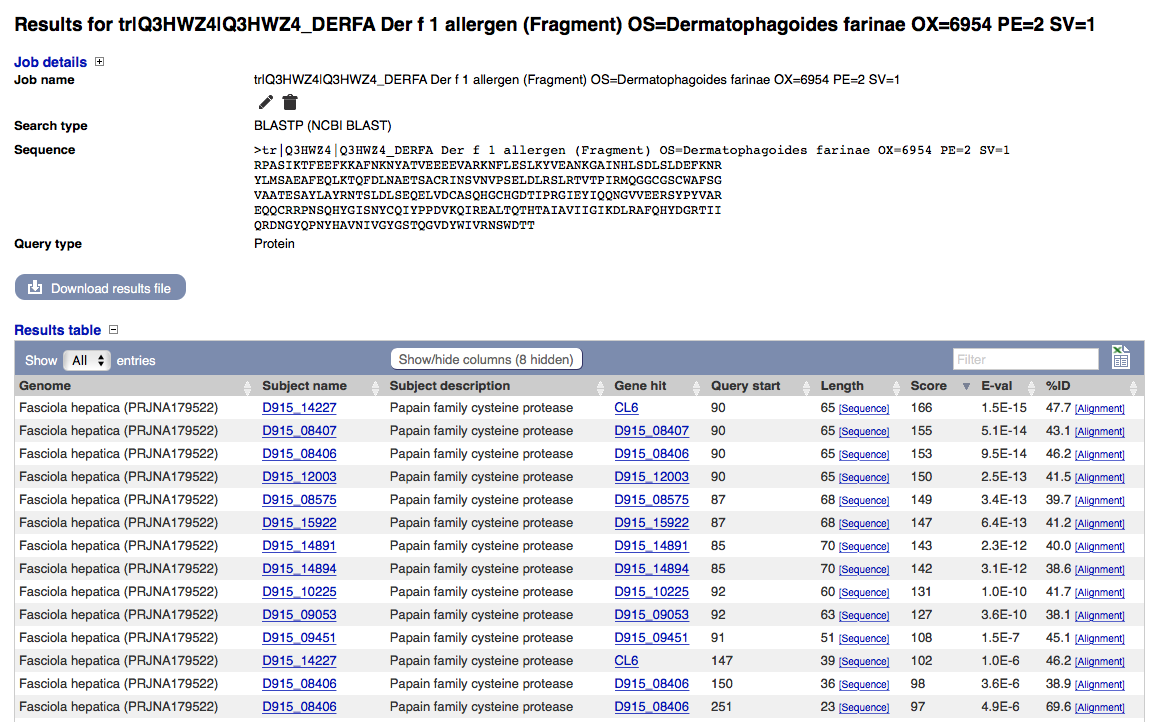N Engl J Med 2002; 347:869-877 made a strong point that the farm effect is mediated by endotoxin but could show only a 1,7 fold higher endotoxin exposure at farms.

LPS therefore will not explain the negative farm association as endotoxin effects are so much similar between farming and non-farming environment. BTW why is only the result of the total sample given here and not just the farm result?

So, what is the reason for the lower IL10 capacity in Figure 2D after LPS exposure – exhaustion, adaptation? And even more important: What is the reason for the lower allergy rate at farms?
If we now go back to table 1 there is a 5,0 fold Der p1 excess in farm – much higher than the 1,7 fold increase of endotoxin. As nearly all allergens have helminth homologues – the question is what did the authors really measure? Da Costa Santiago 2015 has a nice table that could give an answer.

Der p1 is a cysteine protease of 25kDa that has homologues for example in Loa loa. Unfortuneately Loa loa is not an explanation at Bavarian farms – as it is more common in tropical Africa. Cysteine proteases are nevertheless a big tool for helminths – in Schistosoma japonicum a cathepsin B2 cysteine protease is considered the main penetration tool.
Usually cysteine proteases are not allergenic, but the excessive (and rather isolated) rise combined with a reduced Der p1 sensitization in the children, is definitely an unusual finding. The Dermatophagoides pteronyssinus habitat is cosmopolitan, house dust, also influenced by altitude, but there is no known reasons for this excess in farms. Is the Der p1 value just a false positive and has it helminthic and not mite origin?
I am therefore blasting Der p1 sequence (P08176) against all known cow endoparasite genomes. Fasciola has a strong hit with CL6, a papain family cysteine protease with e+48.

With identity values between 40% and 70% there could well be a confusion of mite Der p1 and helminth (Fasciola?) CL6, which should be tested for cross-reactivity.
The story even gets more interesting when reading more about parasites
Helminth parasites have complicated life cycles … at the same time as skewing the immune system toward a Th2-driven response, they have a general suppressive effect on the host immune system that prevents their elimination and reduces immune-mediated tissue damage. It has been suggested that cytokines of the anti-inflammatory network, particularly IL-10 and transforming growth factor- (TGF-), that are produced in response to continual stimulation of the immune system by parasite antigens, are pivotal to regulating the damage they cause and that, coincidentally, these have a bystander protective affect against allergic reactions.
This is exactly what N Engl J Med 2002; 347:869-877 showed: increasingly exhausted IL10 capacity. May the x-axis label should be CL6 instead of LPS?
